INTRODUCTION TO GEOLOGY - VOLCANOES & VOLCANIC PRODUCTS
Hello everyone!
How is everything going? I sincerely hope all of you are doing fine. I've been very busy and very excited about it lately, I just enjoy spending my time productively. Taking a break every now and then to enjoy a walk in the mountains as I'm blessed to live nearby. In case you're new to my blog, I've already launched this Geology series and today I'm ready to share another engineering blog with you. I don't mean to waste your time though, so let's get this started!
As promised in a previous blog, this is the third part of this introductory series regarding the scientific field of studying the Earth's interior structure, the way the planet's structural layers were shaped and the properties of the materials they are comprised of. This time I would like to take the chance to share general information regarding volcanoes. We will have a quick look at the four main categories of volcanoes and discuss broad information regarding all three types of products of volcanic eruptions, so stay focused!
For those of you who have just tuned in I would like to clarify that as the title reads, this is an introductory blog. So what does that mean? Well, it means that I will try to present scientific information in a simplified manner by taking a humoristic approach. I believe that it is easier to learn while having fun and therefore I will try to entertain you while you're here. There's always a high chance of learning a thing or two by reading these blogs, so stay tuned!
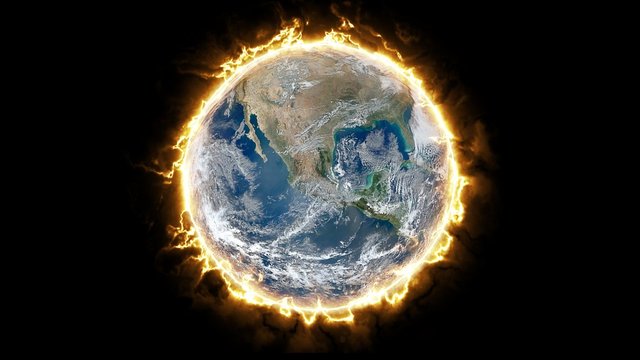
Introduction
Volcanoes are actually not randomly distributed on the natural terrestrial surface, which is more than obvious if you take into consideration the fact that there are plenty of those situated in certain areas of the world and none of those in others. There are certain areas of the natural terrestrial surface that are considered as zones of increased volcanic activity, including the Pacific Ocean basin and the region of the Mediterranean Sea. The Theory of Plate Tectonics suggests that zones of increased activity are located above the boundaries of neighboring tectonic plates due to energy emissions taking place in such areas in the form of pressure, generated by inductive currents flowing from the Earth's core towards the surface. We will elaborate on this later on in this series.
The thorough study of past geological periods has provided Geologists with evidence of continuous volcanic activity throughout the history of our planet. Fossilized vegetation found buried beneath layers of volcanic mud situated on the natural terrestrial surface can be used by Geologists and Engineers in general in order to precisely estimate the time interval that has passed since various major geological events took place. And this is actually one of the pros of volcanic activity, as my previous Geology blog regarding Plutonism and Volcanism might have convinced you that volcanoes are pure evil for the Earth and its residents. Well, if that's the case I can't blame you, however I can proceed to elaborate on some positive impacts of volcanic eruptions. Are you ready?
Volcanic activity gives scientists the opportunity to observe and collect data. Active volcanoes can provides us with significant information regarding our planet's interior structure and situation, with the proper utilization of nowadays' advanced technological equipment, enabling Geologists to make meticulous observations of various geological phenomena. Those observations assist the process of making accurate estimations regarding the power of nature, which are then taken into consideration in order to create statistical models that are based on the Law of Total Probability and can be used to predict volcanic eruptions. As explained in a previous Geology blog regarding the Geological Cycle and its Subcycles, such geological phenomena are described by statistical models mainly due to the fact that it's hard to collect enough data as they take place inside the Earth's interior.
Furthermore, it is commonly believed that the Earth's hydrosphere and part of the atmosphere were created as a result of successive geological events and reactions induced by the planet's volcanic activity. Volcanic events often lead to the birth of new land, as parts of the Earth's crust rise and reach the natural terrestrial surface, due to pressure that hits rock formations situated above the boundaries of tectonic plates. Moreover, volcanic products in certain cases deliver nutrients which in return give birth to fertile grounds suitable for the cultivation of grapes, coffee beans and pineapples of high quality in different parts of the world, depending on climatic conditions. Last but never least, there are several recorded cases in which buried archaeological treasures were found perfectly preserved due to the fact that the natural terrestrial surface in those areas had been covered with lava. Volcanoes are not that bad after all. Are they? You decide.
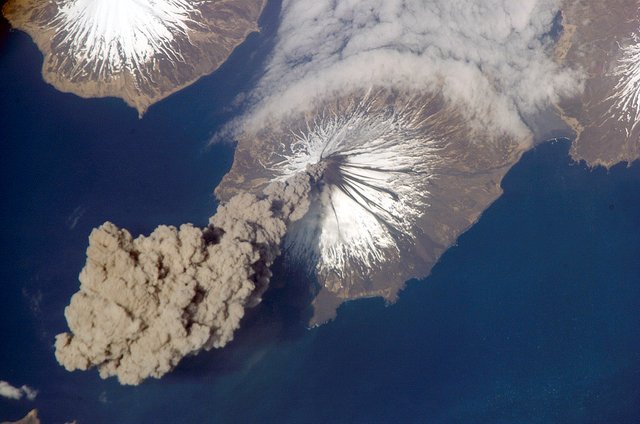
Types of Volcanoes
There are two main types of volcanic acitvity, based on the intensity of the geological phenomenon and the chemical composition of the molten material. From calm eruptions that are followed by the effusion of basaltic lava which flows smoothly on the natural terrestrial surface, to violent and terrifying explosions which are directly related to the production of pyroclastic material, including volcanic ash. The sudden release of energy that has been building up for a long time in the form of pressure shatters magmatic materials, leading to the distribution of fragments around the crater area. Volcanoes demonstrate both calm and explosive behaviour during different periods of their history and it is worth keeping in mind that it is always possible for a calm eruption to turn into a violent explosion. Volcanoes are classified into four main categories according to their craters' shape, which is highly affected by the igneous materials produced and transported. These are the four main types of volcanoes:
Shield Volcanoes
Composite Volcanoes (Stratovolcanoes)
Cinder Cones
Calderas
Now let's take a deeper look at each one of those types.
Shield Volcanoes
Shield Volcanoes and known for their flattened shape which is the result of the large effusion rate of lava that is mainly comprised of basalt of low density that expands in large areas. The liquid state prevents molten basalt from forming volcanic cones as slopes can't be formed any steeper than 7 degrees. Hawaii is known for its shield volcanoes, as it is an island complex that was created by basaltic lava which was infused on the seabed and made it to the natural terrestrial surface. Successive volcanic explosions of basaltic lava gave birth to land with a total area of 10350 square kilometers with mountain peaks that reach heights of 4100 meters.
Hawaiian volcanoes are generally considered to be situated in a calm state, which means they almost always demonstrate calm eruptions and as a result have flattened shapes. Thus some craters located in Hawaii have created huge lava lakes in the past, which resulted in the generation of lava waves that kept flowing inside the lake and hitting the crater's walls giving birth to various kinds of rock formations. Explosive behaviour is not expected, however that does not mean that Hawaiian volcanic eruptions are absolutely safe, as flowing lava destroyed many villages in 1790 and in 1924 during slightly explosive periods. Explosions were also recorded in 1955 and in 1960.
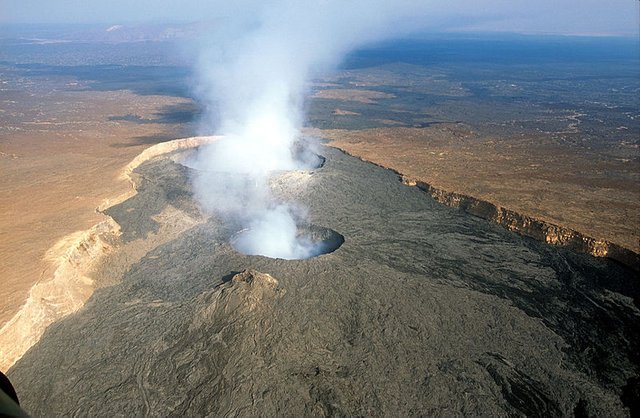
Composite Volcanoes
Composite Volcanoes are also referred to as Stratovolcanoes. Most volcanoes in the world are Composite Volcanoes which exhibit both calm and explosive behaviour. As explained above, calm periods include effusion and flow of lava on the natural terrestrial surface around the crater area, whereas epxlosive periods include violent eruptions combined with the production and emission of pyroclastic materials. This results in the creation of volcanic cones that are comprised of various different types of materials, which is the main reason why such volcanoes are known as composite volcanoes. It is worth noting at this point that this type of volcanic activity gives birth to perfectly symmetrical volcanic cones.
A thick layer of solidified lava is created inside the crater after a long period of calm volcanic activity followed by frequent lava flow. Inevitably this solid formation is blocking the flow of molten material and water vapor towards the natural terrestrial surface and causing the pressure to rise dramatically which in return creates a timebomb, as a violent explosion of pyroclastic materials is inevitable and only a matter of time in this case. This is basically the process that makes volcanoes switch from calm to explosive mode. Once the volcano explodes and all gathered energy is released, a new period of calm volcanic activity awaits.
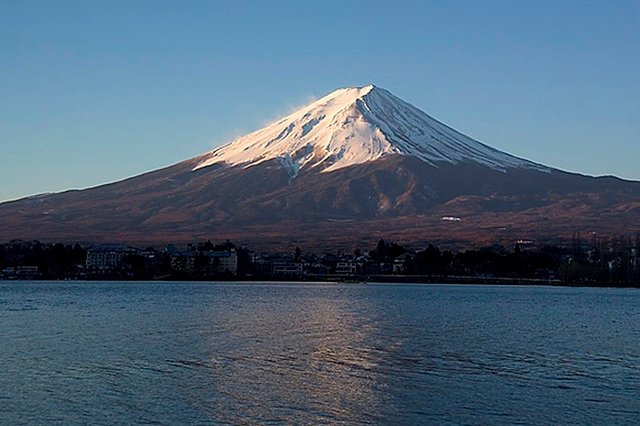
Cinder Cones
Cinder Cones are actually conical shaped hills which mainly consist of pyroclastic materials situated in the size scale of volcanic ashes. Cinder cones tend to demonstrate explosive behaviour, including terrifying and violent eruptions that are followed by the production and emission of pyroclastic materials, however calm periods that include the flow of lava on the natural terrestrial surface are also expected in the case of cinder cones as well. There are numerous cinder cones on Earth, the vast majority of which tend to have steep mountain slopes. Cinder Cones can rise up to 150 meters from the natural terrestrial surface within ten days as it has been already recorded in the past in Paricutin, Mexico. Within 24 hours a cinder cone had risen up to 30 meters from the natural terretrial surface, only to end up reaching heights of more than 125 meters during the next 8 days. Lava filled the volcanic crater and induced more explosive activity which lead to further violent eruptions. One year later the Cinder Cone was more than 500 meters tall.
Calderas
Calderas are also referred to as lava domes, however this is a general term which refers to the specific type and shape of the crater that is formed in some volcanoes. Calderas are actually very large craters that are shaped in a process that is comprised of four main parts. The first part includes a violent explosion which leads to the production and emission of pyroclastic material. Then the violent resurgence of materials hits and shatters the volcanic cone, which is the second part that leads to the creation of the large crater known as Caldera. The formation of the final shape of the crater is the third part of this geological process. The fourth and final part includes the creation of lava lakes, due to the large amounts of molten material and the unique shape and size of this sort of craters. Most Calderas are created by the submergence of rock formations and structural layers during periods of increased volcanic activity, while there are cases in which lava domes were shaped and created due to corrosion induced by weather conditions after the end of explosive periods. One of the world's largest Calderas is the Santorini Caldera situated in the southern Aegean Sea.
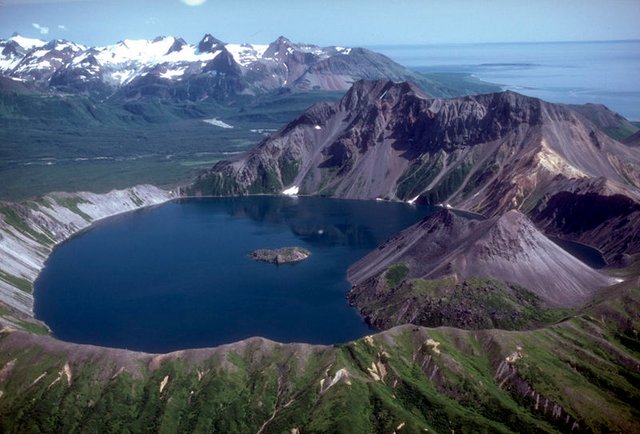
Volcanic Products
The products of volcanic eruptions are also referred to as Volcanic Products. Obviously, we are dealing with materials that emerge from volcanic craters due to the planet's volcanic activity. These materials have been transported from the Earth's interior to the natural terrestrial surface due to volcanic activity and energy released in the form of pressure. Some of these products reach the hydrosphere and even the atmosphere, while their chemical composition varies between different volcanoes or different types of eruptions of the same volcano. Volcanic products are divided into three main categories as demonstrated below:
Lava Flows
Pyroclastic Debris
Volcanic Gases
Now let's take a deeper look at each one of those categories.
Lava Flows
This is a general term that includes all fluids that the molten material flowing on the natural terrestrial surface is comprised of. Water vapor is one of the main components as water in such high temperatures evaporates into the atmosphere only to be liquified again and therefore return to the natural terrestrial surface in the form of rain. This is one of the main reasons why volcanic eruptions are often followed by powerful storms. It is worth noting at this point that the presence of water can be totally irrelevant to the volcanic products, as there are various cases in which massive amounts of water flooded the crater area after molten material flowing from the planet's interior interacted with snow situated at mountain peaks.
The most significant among all liquid volcanic products is lava, which is a mixture of molten igneous materials and metals that includes various gases and water vapor enclosed. This molten mixture travels from the Earth's interior towadrs the natural terrestrial surface due to pressure variations generated by inductive currents and fills the volcanic crater before it starts to flow on the crater's slopes forming lava rivers that can transport magmatic materials across long distances. Those distances depend on topography and are directly related to the molten mixture's density and chemical composition. The liquidity of lava depends on whether the mixture is acidic or alkaline , while temperature plays a significant role as well.
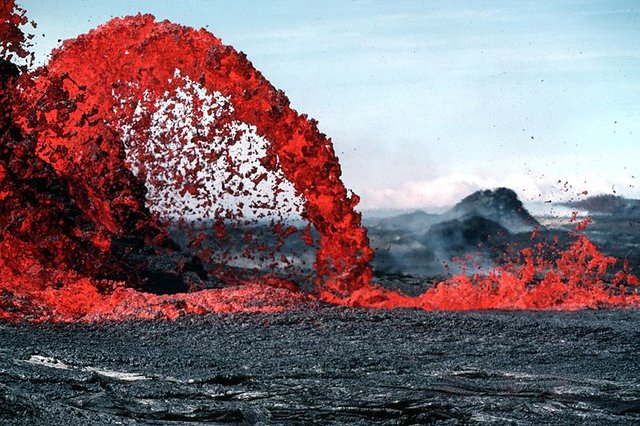
Pyroclastic Debris
These are materials that are mainly comprised of solid rock formations that have been detached from the crater's surface due to violent explosions followed by the release of vast amounts of energy that hit their surface in the form of pressure. As a result, these formations are shattered and fragments of various shapes and sizes are transferred across the crater area. The vast majority of the transferred materials are pieces of solidified lava that emerged from the crater and can be found in a solid or semi solid state. The motion of those materials is generated by pressure induced by gases enclosed in the rift looking to escape. This pressure leads to violent explosions which cause those materials to spread in a semi liquid state, giving them unique oblong shapes as they rotate in the air.
As mentioned above, these newly born rocks come in various sizes with a diameter that ranges from 20 - 25 centimeters to 35 mm on average. Of course there might be extreme, isolated cases of giant or tiny pieces. Most of those pieces regardless of size can in totally irregular shapes, while others appear perfectly symmetrical. It's worth mentioning at this point that some lava layers produce spongy rock formations that can float on water, after emitting all volcanic gases situated enclosed inside those layers. This spongy texture is the result of the materials' interaction with gases and water vapor. These are high porosity rocks with low mass and zero permeability, which is the reason why they can flow on water.
Volcanic Gases
The products of volcanic eruptions include gases which represent the dynamic expression of volcanoes as they carry away solid and liquid materials during their violent resurgence from the Earth's interior and blow them into the atmosphere with terrifying force. Vast amounts of water vapor are present in volcanic gases during eruptions, however plenty of other fundamental elements are present, such as hudrogen, oxygen, carbon monoxide, carbon dioxide, sulfur dioxide and hydrogen sulfide dioxide, which by the way stinks terribly. Don't know if it stinks worse than methane. You decide. Some of the gases mentioned above ignite as they exit the volcanic crater, giving birth to a spectacular show especially at night.
The materials carried away and blown into the atmosphere by volcanic gases are mostly volcanic sand and small igneous rock formations comprised of parts of the shattered lava layers. This results in the creation and formation of volcanic clouds that consist of those materials in high concentrations. Burning clouds are a very unique type of volcanic clouds which travel at extremely high speeds and destroy everything in their way. They consist of a mixture of gases, volcanic sand and lava situated at a temperature of 1000 degrees Celcius or higher. Beware of those clouds, people. They are not nice at all.
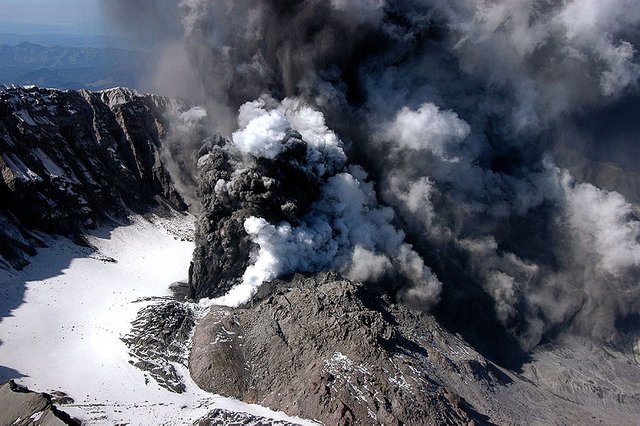
Alright people, that was it for today! Thank you very much for taking the time to read my work. Hope you did not get bored and did learn something new. That brings us to the end of the third part of this Introduction to Geology series. Let me know if you do have any questions in the comments below and I will certainly do my best to provide detailed answers. More episodes coming out within the next few days. Follow me at your own risk and stay tuned for more engineering blogs. :)

IMAGE SOURCES:
REFERENCES:
University Textbooks & Course Lectures:
Γενική Γεωλογία Ι/ General Geology I -RONDOGIANNI T.(National Technical University of Athens, School of Rural & Surveying Engineering, Course Lecture Notes)
Γενική Γεωλογία - Γεωμορφολογία, Πανεπιστημιακές Εκδόσεις Ε.Μ.Π. /General Geology - Geomorphology, University Publications N.T.U.A. - DIMAKIS, GKANIS, SAKELLARIS, CHRYSANTHOPOULOS (National Technical University of Athens,School of Rural and Surveying Engineering, University Textbook)
Internet Links:
https://www.nationalgeographic.com/environment/natural-disasters/volcanoes/
http://geologylearn.blogspot.com/2015/10/the-products-of-volcanic-eruptions.html


Thank you for your attention!
Hope you enjoyed this post and did learn a thing or two.
Follow me and stay tuned for more engineering blogs.
Highest Regards
@lordneroo
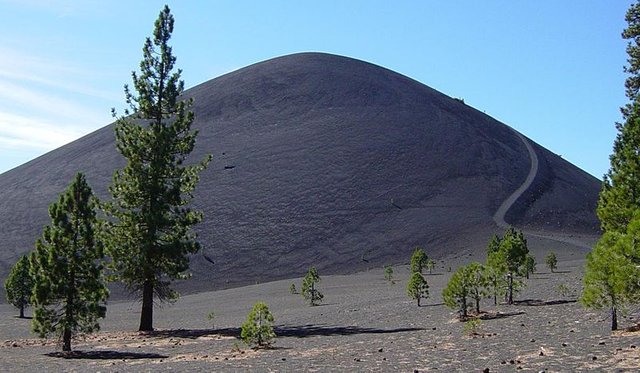
Am very proud to say that I visited a few of the places you mention in your post (Hawaii, Santorini, Mt. St Helen, to name 3 of them :). You made me remembering those trips ;)
Oh hello @lemouth! Hope you're having a great day!
Oh I'm so jealous! You are so lucky to have visited Hawaii and Mount St. Helens. I have visited Santorini in the Southern Aegean Sea though. What a beautiful island, isn't it? Where did you stay? I stayed in Fira and Oia. Did you visit the Red beach?
Anyway, thanks for passing by! Seems like you made me remember my trip to Santorini as well!
See you around!
I visited twice during my honeymoon. We did a cruise on the Mediterranean sea (and thus stayed on the boat). There were only one place to disembark with such a huge boat, on Oia. We took an excursion to visit the vulcano and spent some time in the main city. Not much at the end, I know. The idea behind cruise was to have an overview of many many places to give us ideas for future trips.
Good and all-covering article.
Once in a while I stumble across an article like this.
I really would enjoy a depository of all steemstem content classified after various criteria. Hopefuly our expectations will be sated sooner than later.
Great job!
@geopolis is trying to compile all of the geology related stuff and helping to continue to build the community...
Hey @alexdory, thank you so much for the support!
What a wonderful idea! We have so many talented, hard working authors around that it should be easy to collect vast amounts of credible technical information regarding various fields. I am more than certain this great community will continue to grow and evolve in many ways in the future.
Again, thank you very much for the kind words. It means a lot to me!
Stay awesome!
Hi @lordneroo!
Your post was upvoted by utopian.io in cooperation with steemstem - supporting knowledge, innovation and technological advancement on the Steem Blockchain.
Contribute to Open Source with utopian.io
Learn how to contribute on our website and join the new open source economy.
Want to chat? Join the Utopian Community on Discord https://discord.gg/h52nFrV
Thank you so much for the support!
Have a great day!
A great article lord bro. Volcanoes are always been a mystic thing to me. Here in south Asia, we dont have volacnoes around. The closest one from my place is in Indonasia or Japan i think. Anyways, very well written post bro. :)
cheers!
Hey mate @ied, thank you so much for passing by my blog!
I have only visited one volcano in my entire life. I am talking about the one in Santorini, located in the Aegean Sea. It would be a great show to watch, however I believe we should just hope not to!
See you!
ya, we should hope that they stay calm!
Unfortunately or fortunately, we 'miss' the show here in Nigeria.
How can something destructive look awesome?
Hello @vanessahampton! How are you doing? :)
Well, volcanoes are not just destructive devils. Volcanoes created the Earth's Hydrosphere and the largest part of its Atmosphere. They give birth to new land by causing the crust to rise and transport material towards the natural terrestrial surface. These are just some of the pros of volcanic activity.
I just think it would be a great spectacle to watch from a safe distance knowing that nobody is in danger.
Have a great day and thank you for visiting my blog!
Keeping aside the stereotype that volcanoes are dangerous, they really are a really Cool sight. Unfortunately, I haven't seen one up close. Just in documentaries and in magazines. Word is that diamonds are formed in those fiery depths. How true is that?
Hey @pangoli, thank you so much for passing by!
I agree with you, it can be a great spectacle to enjoy as long as nobody's in danger. And yes you are right, there are cases in which diamonds are brought to the natural terrestrial surface as kimberlite, which is a rare type of magma mainly comprised of igneous materials.
See you around!
I had the great fortune (or misfortune) to be living in E Central Washington when Mt. St. Helens erupted. I was actually on the coast that weekend, so I missed the show that came from the ash fall and super heated clouds of ash. We got approximately 6" (15cm) over the whole farm. It was foul smelling and nasty to work with, but it made a moisture cap and we had a good wheat crop that year. Beans had not been planted yet (fortunately) and final tillage and planting worked it in the soil adequately.
But was it ever abrasive. We wore stuff out at an astounding rate. I tore a pickup motor down that had been toasted in the first week and the wear was phenomenal. But it was also incredibly smooth and polished.
I know that there is Mt. St. Helens ash being used as lapping compound to this day. It worked really good.
Thanks for a wonderful explanatory article. Always a pleasure.
Hello @bigtom13, thank you so much for this lengthy comment of yours!
Whoa I feel sorry for you to be honest! That must have been a spectacular show to watch. And a terrifying one. It is true that the presence of volcanic products assists the creation of fertile soil in many cases.
That must have been a unique experience, even if you did not get to watch the show. You still had to do the dirty work. Well, volcanoes can be really mean. :)
Thank you so much for the kind words and for dropping by my blog!
See you around!
This is a really interesting piece
I used to think that volcanoes are just volcanoes with different names according to their locations. I sure did learn something today
Thanks for sharing
Hi @florae!
Thank you very much for taking the time to read my work! I'm more than glad if you did learn something new today. :)
Take care!
One of the items on my bucket list is to visit some of the locations you mentioned in this post, and among the perks of the post, it served as a mini-tour guide in exploring these landscapes.
Perfect post! Nothing can be added or taken away from it to make it better.
Great job buddy, I'll see you around
Hey @agbona, thank you so much for dropping by my blog and taking the time to read this.
I've always wanted to visit many of those places as well! Hope to make it in the near future. I appreciate your kind words and support, thanks again!
See you around!
Excellent work my friend. The volcanoes have always had a mysterious touch that catches my attention. Good publication! Regards from Venezuela.
Hi @davidchapy, thanks for reading and leaving a nice comment.
Kind regards.